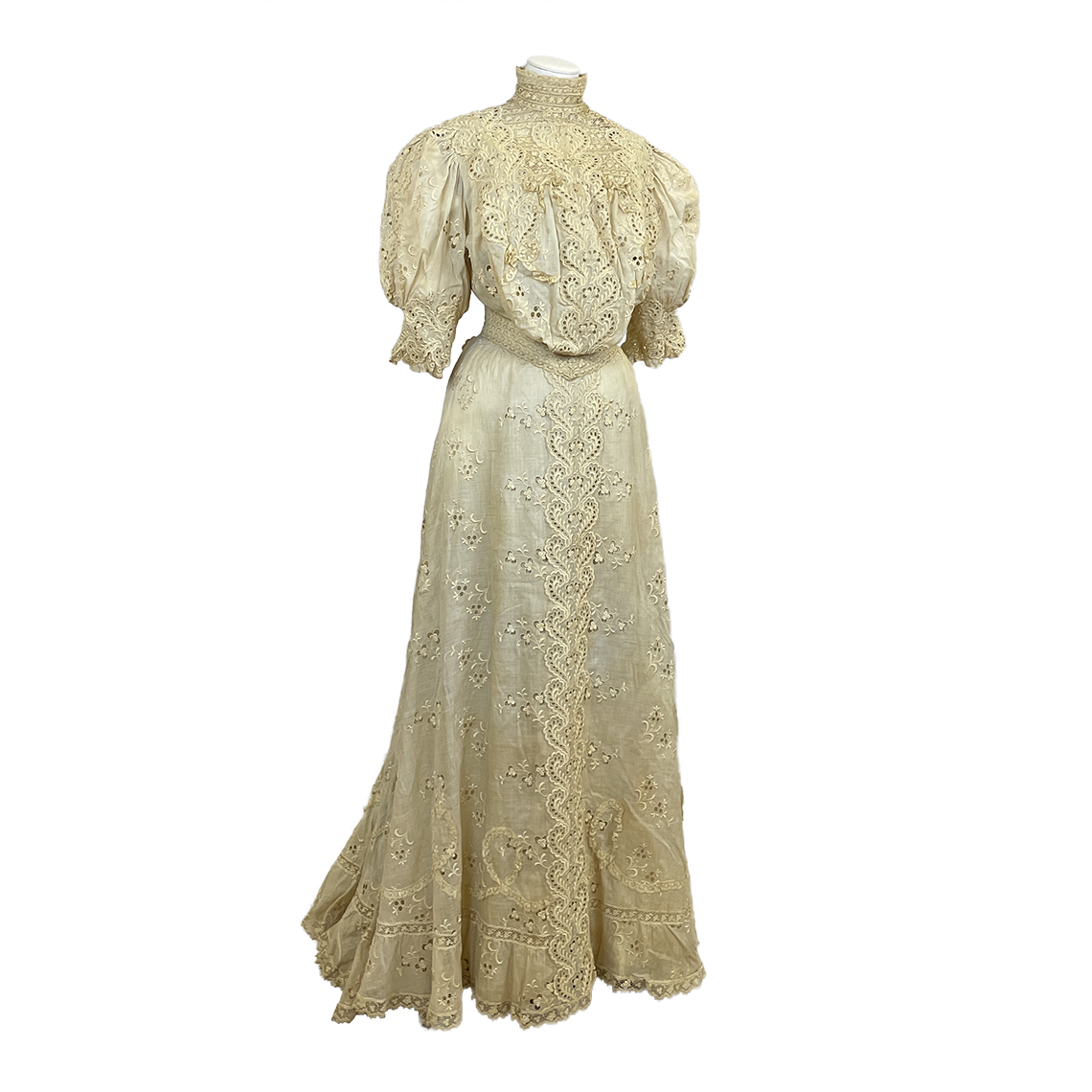Madame Glover: A Gilded Age Success Story
Louisville, 1876.
A young woman named Annie Casey arrived in Louisville with her parents, William and Julia, and likely settled in the Limerick neighborhood just northwest of what we now call Old Louisville. While the city developed Limerick primarily for the large number of railway workers who hailed from Limerick, Ireland, a mixture of working class and well-off Irish immigrants also called the Limerick neighborhood home. We do not know how wealthy the Casey family was, but do know that Annie began working for Close & Wasson, a wholesale and dry goods company, after her father passed away in 1879.
This is where the story of Madame Glover begins.
Annie Casey did not remain with Close & Wasson for long. In 1883, she accepted a position as a dressmaker for Sharpe & Middleton, where she specialized in bridal wardrobes. During the late 19th century into the 20th, it was customary for women to have a “trousseau” to bring with them when they married. Upper class ladies put together extravagant, expensive trousseaux filled with gowns, lace, and corsetry, but the trousseau was a tradition in which even middle class women and those of modest means participated. Young women would begin to fill their “hope chest” with family heirlooms, household items, and personal belongings in preparation for the wedding trousseau. On June 3, 1886, Annie Casey herself married a man named Walter E. Glover, an event that was reported in the following day’s Courier Journal.
Marriage announcement of Walter E. Glover to Annie Casey on June 3, 1886 in the Friday, June 4, 1886 issue of the Courier Journal.
Clearly, Miss Casey had established a reputable business known for its skillfully made and fashionable dresses well before her name became Glover. And after it did, her business continued to thrive in Madame Glover’s dress shop on S. Fourth Street and later in the old Tyler Building on Jefferson Street. A large part of Madame Glover’s success story and her ability expand her dress business was the support from her husband, Walter. With his knack for business management and her eye for design, Madame Glover became the most sought after dressmaker during Louisville’s Gilded Age.
Ivory Day Dress, cotton with eyelet embroidery and lace, made by Madame Glover in 1905. Frazier History Museum Collection.
Debutantes and brides from far and wide wanted a Madame Glover original, creations influenced by her regular trips to Paris to study the latest European trends and techniques. The upper classes of Louisville, Kentucky could take its place alongside the high societies of larger cities thanks to Madame Glover, who rose above her own class barriers. One can only imagine that her journey from a working class daughter of immigrants to an admired authority in the fashion world was not easy, nor expected. Madame Glover’s life and career is an example of what can happen when talent and hard work combine under the right circumstances of opportunity. She not only experienced a bit of the “American Dream”, but much more than many women of her era and background could hope for. I think she knew this, too, because she employed many women from the Limerick neighborhood in her shop.
Madame Glover operated her store in Louisville for nearly three decades until her husband passed away in 1912. She retired thereafter and lived another thirty-five years in New York City, but was buried in Louisville’s Cave Hill Cemetery upon her death in 1947.
Hayley Rankin
Manager of Collection Impact



